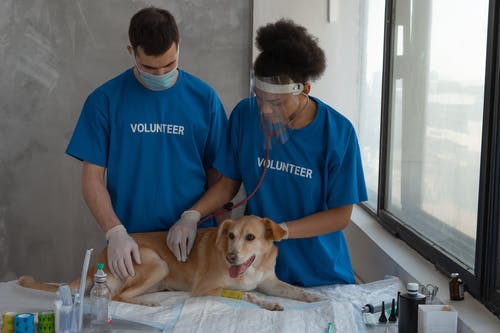It’s possible to come upon a skin issue in your dog when you share your home and life with dogs. Skin conditions are the most common reason dogs visit the vet clinic every year, regardless of whether it’s itching, hair loss, or anything else. The first step to ensure that your pet receives the treatment he needs if one of these conditions arises is to recognize the signs of skin issues in dogs.
The epidermis, the outermost layer, the dermis, and the subcutis comprise the three layers of the dog’s skin. If this barrier is breached, problems such as inflammation or infection could occur.
Skin issues in dogs are not always a single-time occurrence. They usually occur as a result of an existing medical issue. Many of these diseases can be treated, so it is essential to visit your doctor to have the issue identified and treated.
Skin Conditions in Dogs
Many skin disorders are a problem for our dogs, and all of them have the same appearance but are handled differently by your vet. The most common skin conditions that dogs should be aware of when they visit your pet are below.
Allergies
Dogs can have allergies to food items or environmental conditions. Hives, itching, rashes, and frequent ear infections are typical symptoms of allergies in dogs.
When dealing with allergies, it’s essential to determine what’s causing the issue and eliminate it as much as you can. Antihistamines can ensure your dog’s comfort and prevent secondary skin infections caused by allergies. Look up “Vet in Vancouver WA” for the best results.
Skin Infections
Skin infections can cause skin irritations like bumps, rashes, crusting, and other disturbances to the skin. Licking, scratching, or biting on the affected area usually causes more irritation, leading to more moisture and the development of bacteria.
Examining skin samples and examining the results under a microscope is an effective method of identifying skin conditions. Your vet may prescribe antifungal, antibiotics, or anti-inflammatory medications to treat the dog’s condition, based on the type of disease.
Hot Spots
Hot spots are an isolated skin condition in dogs. It appears as an enlarged, red area of skin, which spreads quickly and then discharges pus. The skin’s moisture could cause hot spots. It could be a result of swimming or as a result of an existing allergy or parasite infection.
A visible hot spot could often be used to diagnose it. The most common treatment is to cut the area of hair to dry out the skin. Your doctor may prescribe oral medications for treating the condition, dependent on the severity of the problem.
Parasites
The parasites, particularly fleas, often cause skin problems in dogs. Hair loss, scabbing, itching, and redness are typical side effects of parasitic infections. It is essential to recognize that your pet may have parasites, even if you do not notice them.
Luckily, most parasite-related infections can be treated with prescribed medicine from your vet. Your vet can also teach you ways to remove parasites from your pet’s environment and prevent the possibility of re-infection. A monthly tick and flea preventative can help your pet avoid skin irritations caused by parasites and discomfort. Look up “Dog dermatologist at Columbia River Veterinary Specialists” for more details.
Calluses
Calluses are hairless, thickened areas of skin that typically develop around pressure points like joints, mainly when dogs are large and heavy and prefer sleeping on hard floors. They usually affect the elbows; however, they may also be a problem for other joints. Calluses can appear ugly; however, they’re typically harmless.
Callus Pyoderma-related infections, which can cause pain and inflammation in dogs, can be present occasionally. If this occurs, your vet may recommend treatment with antibiotics; visit their website for additional details. It is also possible to purchase cushions for your dog’s elbows to help protect them and decrease calluses.








